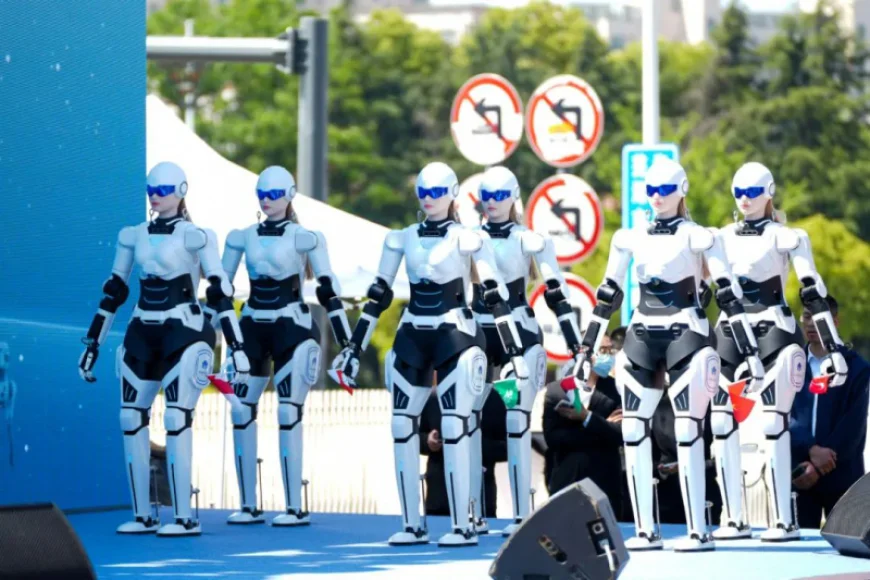China Leads Humanoid Robotics Revolution with Embodied AI for Elder Care and Smart Homes
China is rapidly advancing humanoid robotics, with embodied AI driving innovations in elder care and smart home applications. Powered by tactile skin and cerebellum-inspired motion control, the next generation of intelligent robots is moving from research labs into everyday life—reshaping how society lives, works, and cares.

Humanoid Robots Move from Labs to Real Life: China’s Embodied AI Industry Accelerates Toward Mass Adoption
At 3 a.m., a robotic arm in a 24-hour convenience store is efficiently sorting goods. In a major hospital in Shanghai, a domestically developed laparoscopic surgical robot assists in delicate procedures. In an auto factory, industrial robots seamlessly handle sorting, transporting, and precision assembly. In restaurant kitchens, robotic chefs cook over 800 meals a day. At banks, intelligent customer service bots manage financial inquiries.
These are not distant sci-fi visions—they are the reality of a world where humanoid robots are transitioning from lab prototypes to mainstream life.
A Cultural and Technological Milestone
In 2025, humanoid robots made their debut on China’s Spring Festival Gala stage, performing synchronized dances that merged technology with traditional culture. In April, an intelligent robot from Beijing E-Town made history by completing the world’s first humanoid robot half marathon. With astonishing speed, intelligent machines are evolving from mechanical tools into collaborative partners—reshaping society in the process.
China’s AI Industry Set for Explosive Growth
Artificial Intelligence took center stage in China’s 2024 Government Work Report and, in 2025, became a standalone policy category. The “AI+” initiative aims to merge China’s digital strengths with its robust manufacturing base, accelerating the adoption of AI across sectors and daily life.
China’s AI industry is projected to grow from ¥398.5 billion in 2025 to ¥1.73 trillion by 2035, with a compound annual growth rate of 15.6%. By 2030, it is expected to exceed ¥1 trillion, outpacing the global average and positioning China as a world leader in artificial intelligence.
Aging Society and “Time Poverty” Drive Demand for Embodied Intelligence
China has over 300 million citizens aged 60 and above, with 120 million living alone. As the country enters a “silver era,” traditional elder care models show critical flaws. For example, one major hospital found that 10% of fatal falls among seniors go unnoticed until too late, as conventional cameras offer only delayed alerts. Furthermore, 83% of elderly individuals refuse to wear monitoring devices due to privacy concerns.
Meanwhile, urban professionals face increasing time scarcity. The average middle-class household spends 2.5 hours daily on housework. Despite advances in home automation, tasks like trash disposal, laundry drying, and kitchen cleanup still require manual effort.
These social challenges demand intelligent, autonomous, and emotionally aware service solutions—creating fertile ground for embodied AI.
A Breakthrough: China’s First Embodied Humanoid Robot for Elder Care and Smart Homes
Amid this demand, Yijiahe, a leader in intelligent robotics, has officially entered the embodied AI sector. Leveraging a decade of R&D experience and proven commercialization success, the company launched LinDong Technology to provide next-generation embodied humanoid robots tailored for elder care and smart living.
LinDong’s vertically integrated development model—from components to full-system solutions—has enabled rapid industrial deployment. The company’s competitive edge lies in two proprietary technologies: “Cerebellum Control” and “Tactile Skin.”
Cerebellum Control uses advanced motion algorithms, force feedback, and sensor fusion to ensure smooth navigation, object manipulation, and obstacle avoidance—even in tight home environments. This system also prioritizes safe human-robot interactions in caregiving scenarios.
Tactile Skin mimics human touch sensitivity through flexible electronics and nanotechnology. It can detect pressure at a millimeter scale, recognize emotional states, and provide physical and emotional comfort—turning robots into empathetic companions.
Together, these technologies enable a 24/7 intelligent service ecosystem:
-
In Elder Care: Robots monitor vital signs, detect falls, enable remote diagnostics, and offer real-time alerts. Emotional recognition systems allow for natural, uplifting conversations that increase seniors’ well-being.
-
In Smart Homes: With behavioral sensing and adaptive task planning, robots can dynamically assist in household chores and caregiving. Customized responses make the experience seamless for every household.
Yijiahe’s unique model—self-developed hardware combined with scenario-driven applications—is accelerating the transition of humanoid robots from industrial labs into daily living environments.
The Next Intelligent Terminal After Smartphones?
According to Qianzhan Industry Research Institute, China’s elder care robot market will reach ¥15.9 billion by 2029, while home service robots are expected to grow over 40% annually. Future competition in humanoid robotics will center on two pillars: motion intelligence driven by cerebellum control and emotional interaction enabled by tactile sensing.
As costs drop and technologies mature, humanoid robots are poised to enter ordinary households, potentially becoming the next ubiquitous smart device—following the smartphone. When robotic arms begin to “think,” and sensors start to “feel,” humanity may finally be freed from tedious labor and rediscover time for creativity, care, and exploration. This is the gentle promise of technology in service of civilization.
What's Your Reaction?
 Like
0
Like
0
 Dislike
0
Dislike
0
 Love
0
Love
0
 Funny
0
Funny
0
 Angry
0
Angry
0
 Sad
0
Sad
0
 Wow
0
Wow
0







































